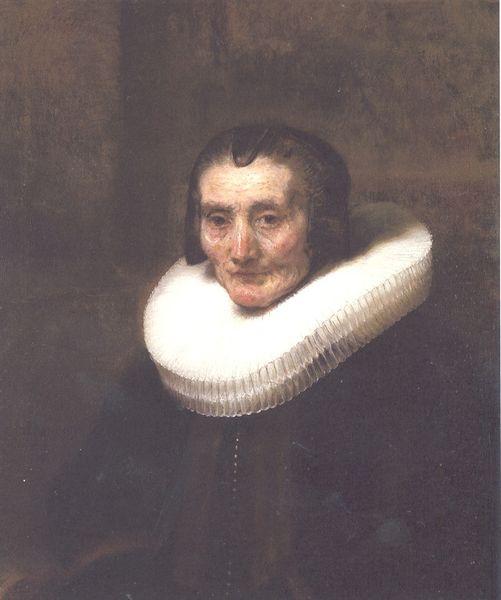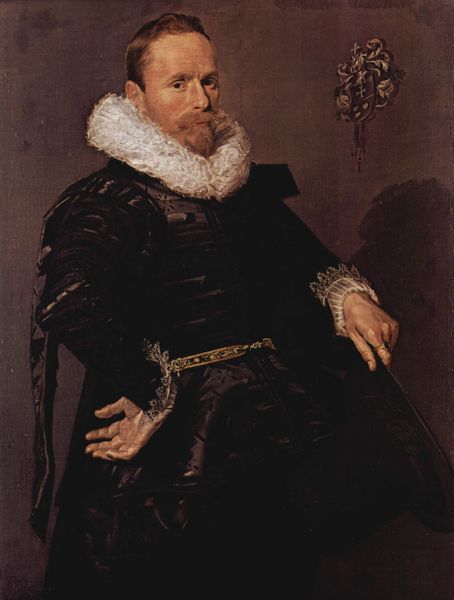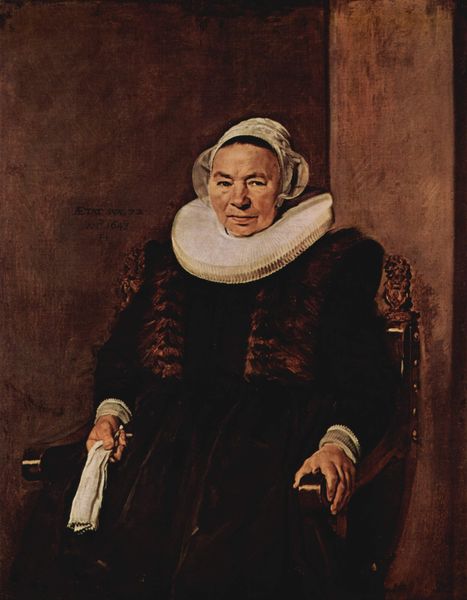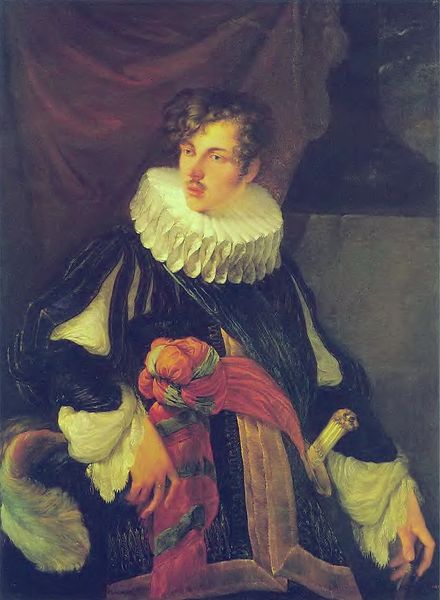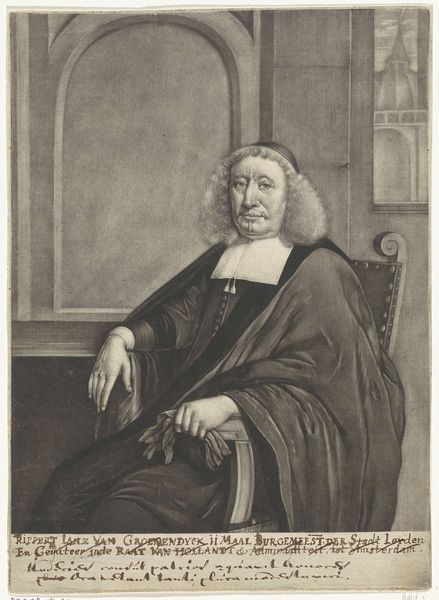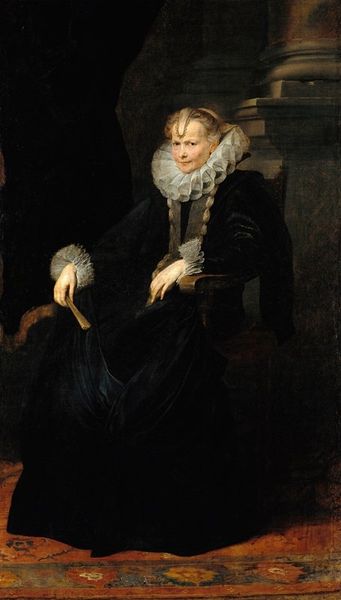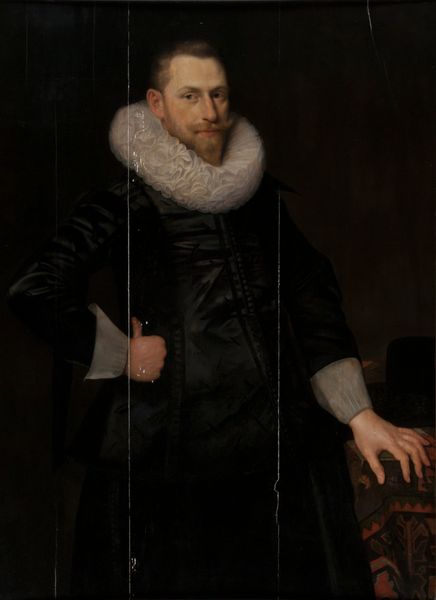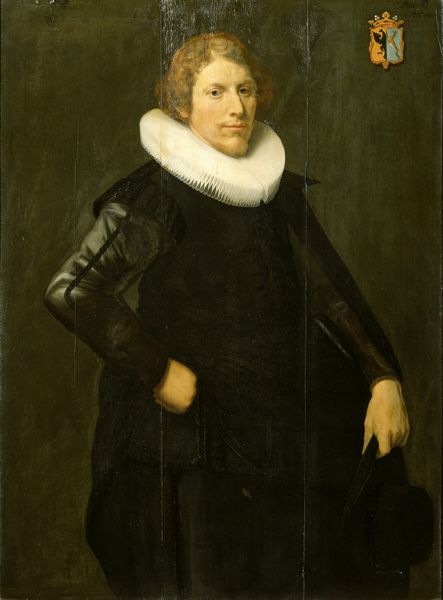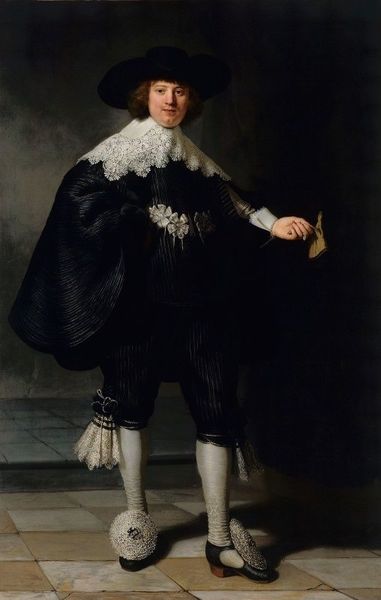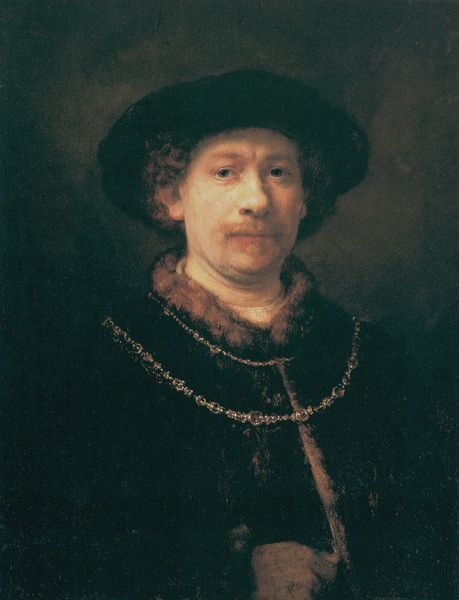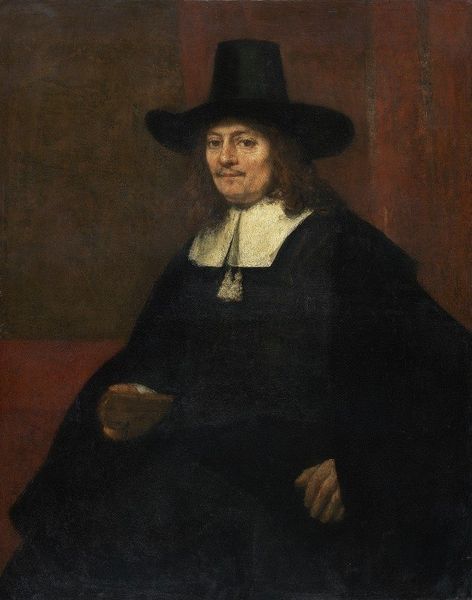
Portrait of Margheride Geer, Wife of Jacob Trip 1661
0:00
0:00
painting, oil-paint
#
portrait
#
self-portrait
#
baroque
#
dutch-golden-age
#
painting
#
oil-paint
#
genre-painting
Dimensions: 131 x 97 cm
Copyright: Public domain
Curator: Looking at Rembrandt’s "Portrait of Margheride Geer, Wife of Jacob Trip," painted in 1661 and currently housed in the National Gallery, London, the first thing that strikes me is how… sombre it is. All those dark tones. Editor: Indeed. There's a quiet intensity about it, isn't there? You almost feel like you're intruding on a very private moment, laden with societal expectations placed upon wealthy Dutch women. Curator: Absolutely. We have a woman clearly positioned within the upper echelons of Dutch society; you can see it in the immaculate ruff and the fabrics she’s wearing, yet her expression reads as remarkably unfussy, without any grandiosity or conceit. Consider the symbolic weight carried by portraits of women in that era – often commissions intended to portray wealth and lineage and reinforce patriarchal power. Do you think the sobriety serves as quiet commentary? Editor: Undoubtedly. I see Rembrandt perhaps attempting a departure, not necessarily disrupting tradition entirely, but perhaps highlighting some ambivalence inherent within these roles. I find myself drawn to her hands. There's that delicately held cloth – so meticulously painted – which feels almost like she is clutching at remnants of her social persona. What narratives can be unpacked here regarding female identity and the constraints placed upon women in 17th century Netherlands? Curator: Precisely! Rembrandt was quite skilled at rendering emotional and psychological nuance. Looking beyond her reserved affect, I see this portrait opening discussions on the complexities and constraints governing women, especially the wealthy and married, and hinting towards the tensions that underpinned that time. The artwork can provide invaluable perspectives when it comes to gender studies and analysis of 17th century life. Editor: Yes. Ultimately, beyond being a display of wealth and status, Rembrandt seems to hint at something more introspective, and that raises important discussions. I will certainly ponder on those as I move along. Curator: It prompts me to look more critically at other works, to consider beyond just surface appearances and accepted narratives.
Comments
No comments
Be the first to comment and join the conversation on the ultimate creative platform.
